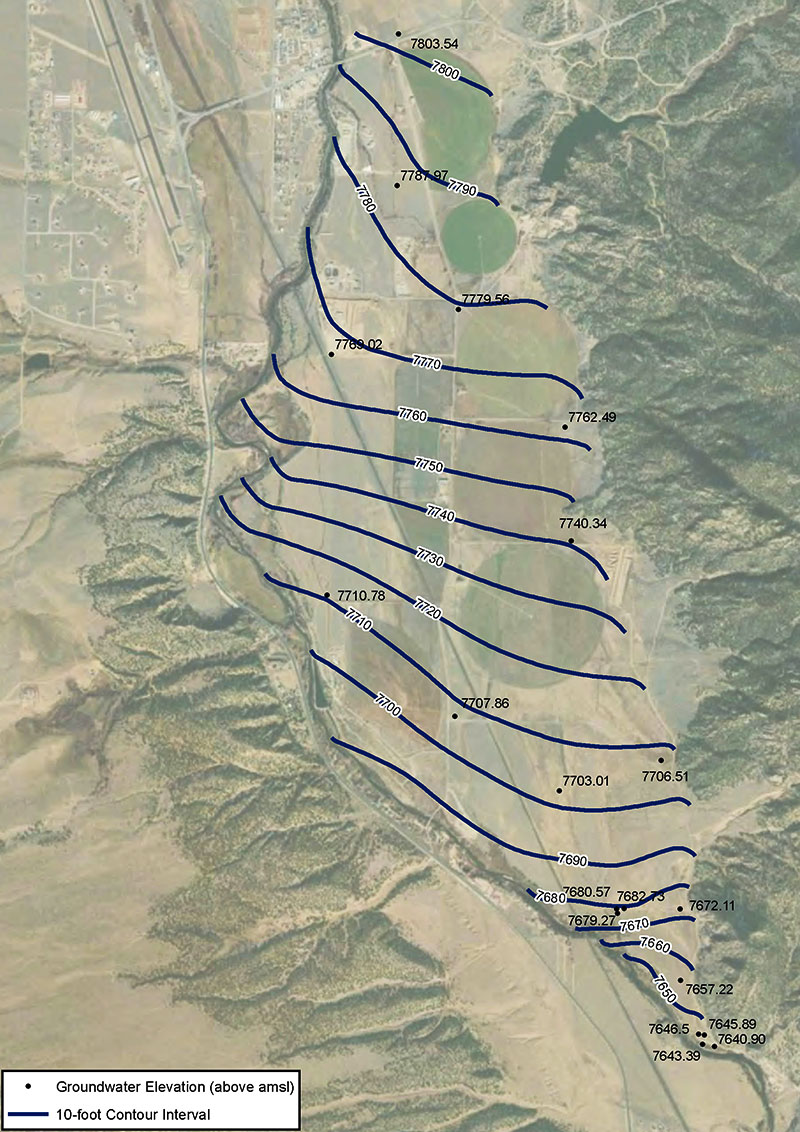Nestlé Waters North America’s 2019 report to Chaffee County about its local water operations shows continuing compliance with all 1041 permit conditions except for the quota of 50 percent local drivers for water-hauling trucks.
Other highlights of the report include:
- Groundwater and surface-water monitoring data.
- Wetlands monitoring information.
- Financial impacts.
- Water law compliance.
Truck Drivers
As documented in the Nestlé report, trucking contractor DG Coleman employed 13 drivers to haul water to Nestlé’s bottling plant in Denver, and five of those drivers live in Chaffee County. Out of a total of 3,107 roundtrips, local drivers made 1,444, or 46.5 percent.
Given persistent efforts to hire local drivers, Chaffee County officials agreed to “relief from this permit condition, provided NWNA and Coleman efforts to recruit and retain Chaffee County drivers continue and are documented,” according to the report.
Chaffee drivers worked 14,792 hours and earned $482,031 in 2019.
Groundwater and Surface-water Monitoring

Nestlé’s “Surface- and Ground-Water Monitoring and Mitigation Plan,” approved by the county in 2010, requires the company to monitor the Ruby Mountain Spring site, the Bighorn Spring site and the Pinedale Aquifer, from which Nestlé draws the water it uses. The plan also requires the company to cease pumping and mitigate any adverse effects that result from its water withdrawals.
The Arkansas River and the Mosquito Range ‒ better known locally as The Arkansas Hills ‒ define the boundaries of the Pinedale Aquifer, which extends from just north of U.S. Highway 24/285 to just south of Ruby Mountain Spring.
Recharge for this alluvial aquifer comes primarily from the Arkansas Hills to the east. Water also seeps into the aquifer from irrigation (ditches and center-pivot irrigators), intermittent surface-water runoff and infiltration from the Trout Creek watershed.
For the 2019 water year (Nov. 1, 2018-Oct. 31, 2019), Nestlé reports pumping 88.97 acre-feet of water from the aquifer, less than half of the 196 acre-feet/year approved by the State Engineer’s Office.
At Ruby Mountain Spring, Nestlé reports below-average surface flows for the first half of the 2019 water year and average flows for the second half of the year compared to flows recorded during the previous 10 years.
Because water at Bighorn Spring was observed bypassing the recording instruments, the data is less accurate, but surface flows remain “within the range of previous seasonal observations.”
Surface flow data recorded at Ruby Mountain Spring show “slight increases in flows” that coincide with times when pumping stopped. Equivalent data at Bighorn Spring, which is 3,000 feet upgradient from the production wells, show no effects from pumping during the 2019 water year.
The total surface discharge measured at Ruby Mountain Spring was 1,653 acre-feet for the 2019 water year. The flow from Bighorn Spring was 547 acre-feet. The report notes that both numbers are likely conservative due to some water bypassing measuring devices.
Wetlands Monitoring
Nestlé has monitored the Bighorn Spring and Ruby Mountain Spring wetlands as part of its 1041 permit and is required to “reduce or suspend water withdrawals” if “a significant negative effect” occurs.
The Colorado Mountain College Natural Resources Management Program collects data as part of long-term wetlands monitoring.
The 2019 CMC report concludes, “From year to year, the percentage of land cover within the same transect is quite variable. In general, there is a direct correlation between (atmospheric) moisture, vegetation, and % bare ground from 2010 to 2019. In 2019, the site reflected a moderate amount of recovery from the exceptionally dry season in 2018.”
Local Financial Benefits
In addition to paying salaries for local truck drivers, Nestlé has funded local education endowments, donated to local organizations, paid property taxes, paid for augmentation water and paid for other local services.
As previously reported, Nestlé established two $250,000 science education endowments with The Denver Foundation to benefit Chaffee County’s two public school districts.
Support Our Schools Salida manages disbursements for the Salida school district endowment, and the Buena Vista Community Education Assistance Fund manages disbursements for the BV school district.
The 2019 report indicates that, since the establishment of these endowments, SOSS has received nearly $137,000 in distributions for scholarships and other science education projects while BVCEAF has received more than $133,000 for education funding.
In the meantime, the SOSS fund principal has grown to $290,906, and the BVCEAF principal has grown to $288,592. Nestlé reports 2019 disbursements of $14,081 to BVCEAF, including $7,000 in scholarships, and $0 to SOSS.
For its 2019 community giving, Nestlé reports donations of $10,000 to the Chaffee County Community Foundation, $2,500 to the Collegiate Peaks Chapter of Trout Unlimited, $2,000 to The Optimist Club of Buena Vista, $1,500 to the Quilts of Valor Foundation, $1,000 to the Boys and Girls Clubs of Chaffee County and two one-time donations totaling $1,900 to unnamed vendors.
Nestlé also donated bottled water in 2019, including:
- 4,781 cases to Food Bank of the Rockies.
- 108 cases to the Chaffee County Fire Protection District during the Decker Fire (in addition to an annual donation of 14 cases to the fire protection district.
- 40 cases to the Salida Cyclone Swim Team.
Nestlé reports paying $25,931.02 in real property taxes in 2019 and “approximately $29,900 for local utilities associated with project operations” as well as “approximately $9,800 to local service providers in 2019 for waste management, telecommunications, security and other miscellaneous items.”
Finally, the Nestlé report indicates the company paid $152,174 to the Upper Arkansas Water Conservancy District for replacement water to offset its out-of-priority withdrawals from the aquifer in 2019.
Water Law Compliance
Nestlé pays the Upper Ark District for replacement water because it does not own a water right to withdraw sufficient water from the aquifer for its bottle water operations.
In compliance with the 1041 permit, Nestlé contracts with the Upper Ark District to release water into the river upstream from Nestlé’s wells to ensure that no water rights owners are injured by the company’s operations.
To meet this requirement in 2019, the Upper Ark District used water leased from the Pueblo Board of Water Works, water acquired from the Fryingpan-Arkansas Project and/or water from shares in the Twin Lakes Reservoir and Canal Company.
As of Dec. 31, 2019, the Upper Ark District stored a total of 216,475 acre-feet of water in Clear Creek, Turquoise and Twin Lakes reservoirs that could be used to meet Nestlé’s 196 acre-foot/year maximum requirement for replacement water.





